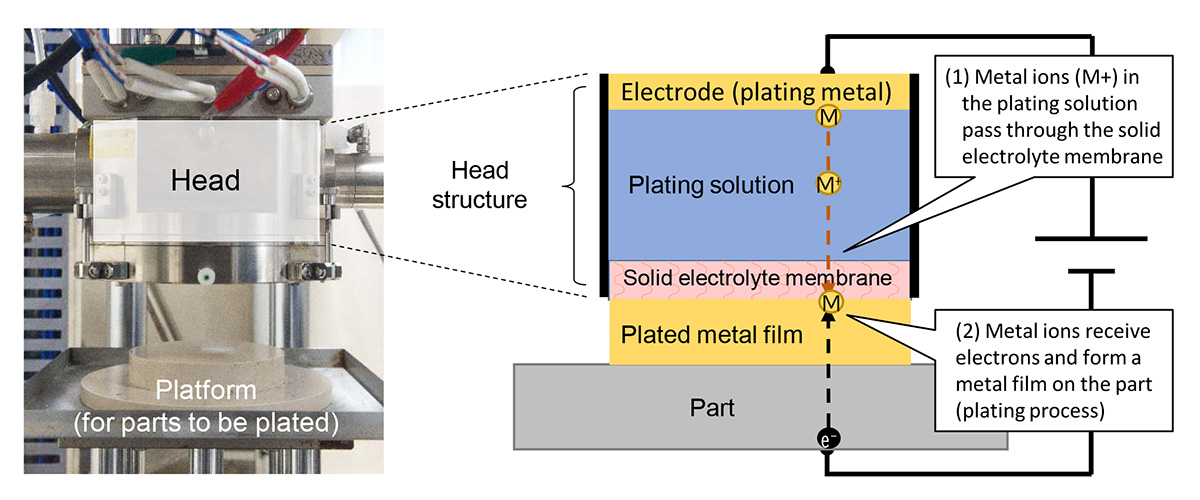
Toyota City, Japan, June 30, 2020―Toyota Motor Corporation (Toyota) today announced that it has developed a world’s first*1 stamping-type plating technology that uses a polymer membrane (solid electrolyte membrane), through which metal ions can pass, to apply plating, like a stamp, only to areas requiring plating. The technology is used in the plating process for forming copper, nickel, and other metal coatings on substrates in the process of manufacturing electronic parts. Toyota has also announced a collaboration with Mikado Technos Co., Ltd. and Kanematsu Corporation to manufacture and sell, and therefore expand the use of, new plating machines based on this new technology. The machines will be launched on July 1.
This new stamping-type plating machine eliminates the need of a dipping process where parts to be plated are completely immersed in multiple baths of plating solution, which is required in the most common plating process at present. As a result, waste solution can be dramatically reduced to about one-thirtieth and CO2 emissions to about one-third, which contributes to a significant reduction in environmental impact. The technology also reduces plating time and process footprint.
Toyota decided to launch the stamping-type plating machine, which is expected to deliver these outcomes, and expand use to many companies in a range of industries, not just to its business partners in the production of Toyota automobiles, to help reduce the impact on the environment and provide other benefits. Specifically, Toyota is providing its patents and expertise to vacuum press manufacturer Mikado Technos, which has incorporated its own technologies to develop and manufacture a stamping-type plating machine for sale through Kanematsu.
Sales inquiries
Kanematsu Corporation, Components and Material Dept. Sec. No1
- Tel
- +81-3-5440-8000
- sed@kanematsu.co.jp
